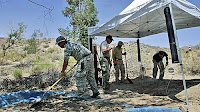 The L. A. Times reported late this afternoon (4:58 PDT) that the two areas near the Barker Ranch site where bodies were suspected of being buried yielded nothing but a shell casing, ash and small animal bones. According to the latest report, Inyo County sheriff's investigators today apparently called off their search for human remains at the site. Lt. Jim Jones of the Inyo Country Sheriff's office is quoted as saying, "forensic testing indicates that there were no human remains in or around that site." Whether Charles Manson and his "Family" committed murders heretofore unaccounted for thus remains unconfirmed.
The L. A. Times reported late this afternoon (4:58 PDT) that the two areas near the Barker Ranch site where bodies were suspected of being buried yielded nothing but a shell casing, ash and small animal bones. According to the latest report, Inyo County sheriff's investigators today apparently called off their search for human remains at the site. Lt. Jim Jones of the Inyo Country Sheriff's office is quoted as saying, "forensic testing indicates that there were no human remains in or around that site." Whether Charles Manson and his "Family" committed murders heretofore unaccounted for thus remains unconfirmed.
Initial reports indicated the investigation would continue through Thursday, but apparently the investigation was ended today given the complete absence of any promising evidence. As I noted in an early blog entry, there was a similar kind of search at the ranch a couple of months ago, which also turned up nothing. The claim that there were bodies buried there was never entirely believable, but now, in any case, the matter can be laid to rest in the absence of any leads.
And that, as they say, is that. The question remains as to why investigators found the assertion "within the realm of probability." I should add that I have no idea how often Ed Sanders (author of The Family) updates his website, but I noticed no comment on the investigation on his website, which could be interpreted as an indication of his skepticism regarding the recent endeavor. I have ordered a copy of his 2002 update of The Family; if there is any information in it that can shed light on this recent activity, I will certainly let you know.
Wednesday, May 21, 2008
Death Valley Days: Two (Over And Out)
Snuff, Reality TV, and the Issue of the "Too Real": Part 1
 The question of Charles Manson and the “snuff film” has preoccupied my thoughts the past few days, prompted, of course, by the forensic investigation currently going on at the Barker Ranch (see my recent blog entries on the subject, below).
The question of Charles Manson and the “snuff film” has preoccupied my thoughts the past few days, prompted, of course, by the forensic investigation currently going on at the Barker Ranch (see my recent blog entries on the subject, below).
It occurs to me that the controversy surrounding the possible existence of the “snuff film” (never proven) is in fact no longer relevant—if the issue is simply one of transgression, the exhibition of content that is putatively considered “obscene”: this is merely a question of propriety, what ought to be shown and not shown. In a culture such as ours that is so preoccupied with the technology of war, we are able to see snuff film, in the sense of the filming of murder and the recording of death, just about every night on the national news, comprised as it is of video footage of missiles striking enemy strongholds, rockets raining down on “insurgents” hiding behind city walls or within buildings, the aftermath of car bombs with bodies littering the street, and numerous other atrocities.
The issue of televised snuff reveals that the so-called problem or controversy surrounding the snuff film exists because of photographic technology. In his essay on the art of the cinema, “The Ontology of the Photographic Image” (1945), André Bazin argued that photography had a privileged access to truth because it was the result of a mechanical, reproductive process over which human agency had no control. He thus regarded the cinema primarily as a vehicle of revelation, rather than transformation, of reality. “For the first time,” he wrote, “an image of the world is formed automatically, without the creative invention of man.” Bazin’s idea of an image being formed “automatically” is called the principle of automatism. Historically considered, Bazin privileges the form of mimesis known as aletheia (revelation), in contrast to adaequatio (correspondence). But in both of these modes of truth, the act of representation brings into appearance the physis (essence of life) of that which is imitated.
The history of photography reveals that automatism, the potential for revelation, became one of its primary attractions. A marketing campaign by Kodak once touted the importance of photography’s automatism—there was a camera nicknamed the “Kodak Automatic”—by its ability to capture “precious moments”—weddings, births, anniversaries, graduations, award ceremonies, family reunions and the like, all of those “once in a lifetime” events upon which so much of our modern memory is formed. By the same token, photography’s automatism has enabled some catastrophic historic moments to be captured on film: the explosion of the Hindenburg, for instance, on May 6, 1937, at the naval air station at Lakehurst, New Jersey (pictured), or the stark truth of the Nazi death camps. There’s the famous, Pulitzer Prize-winning photograph taken by photojournalist Eddie Adams in Saigon in 1968, capturing the execution of a Viet Cong prisoner. Most Americans, I imagine, have the images of the collapsing World Trade Center Towers indelibly etched in their memory—I certainly do—an event made possible by the automatism of photography and the ubiquity of the inexpensive video camera.
Thus the principle of automatism allows photographic technology to capture atrocity as well. Considered strictly as a form of technology, photography illustrates what Edward Tenner calls the “revenge effect” of all technology: a process designed for one purpose turns out not only to subvert that purpose but to achieve its opposite.
The principle of photography’s automatism enables “Reality TV” as a form of representation but, paradoxically, creates a problem it must simultaneously overcome: there is the real, but there is also the too real. Reality TV must disclose (reveal) but also occlude (shut off, hide) at the same time. For instance, the subject of a "Reality TV" may use the toilet, but the camera doesn't intrude on the subject's privacy. In order to illustrate the nature of this dilemma, an anecdote is in order. Some years ago, I read a letter in Ann Landers’ column from a woman who, while snooping through her teenage daughter’s purse, had discovered birth control pills. She was writing to Ann Landers for advice on how to best handle her dilemma: she wanted to talk to her daughter about the daughter’s presumed promiscuity, but to do so she would have to admit to her daughter that she had been snooping through her daughter’s purse. (In her reply, Ann Landers suggested the problem originated with the mother’s lack of trust in her daughter, which is precisely why the daughter kept the pills hidden away.) The moral of the story is that in her remorseless, voyeuristic search for what was real, the mother became an eye-witness to something she didn’t wish to see—to know (knowledge as seeing). The mother should have been more familiar with Sophocles’ Oedipus Rex.
The makers of “Reality TV” programs face the same daunting problem that the nosy mother did while rummaging through her daughter’s purse: how to reveal the truth, but not to go too far, not to pass a certain proscribed limit. The problem isn't so much what you can show as what you can't show. If you go too far, for example, you find yourself confronting the outrage caused by the exposure of Janet Jackson’s breast during the Super Bowl XXXVIII half-time show (2004)—the problem of the intrusion of the real, which gets you into trouble. On the other hand, if you don’t show (reveal) enough, you can’t claim to be presenting “reality.”
The Lacanian critic Slavoj Zizek conveniently addresses this problem by using as an illustration a love scene in a Hollywood film:
Let us take an old-fashioned, nostalgic melodrama like Out of Africa and let us assume that the film is precisely the one shown in cinemas, except for an additional ten minutes. When Robert Redford and Meryl Streep have their first love encounter, the scene—in this slightly longer version of the film—is not interrupted, the camera “shows it all,” details of their aroused sexual organs, penetration, orgasm, etc. Then, after the act, the story goes on as usual, we return to the film we all know. The problem is that such a movie is structurally impossible. Even if it were to be shot, it simply “would not function”; the additional ten minutes would derail us, for the rest of the movie we would be unable to regain our balance and follow the narration with the usual disavowed belief in the diegetic reality. The sexual act would function as an intrusion of the real undermining the consistency of this diegetic reality. (Looking Awry, MIT Press, 1992, p. 111)
Stated another way, movies are commercially successful only to the extent that they are magical, that they enchant the viewer. They cease to enchant or enthrall when brute fact intrudes on the theatrical frame: dreary fact is rather like a spoilsport who destroys the illusory world of the game. To “show it all” is to go way too far, to dispel the illusion, that is, to allow the real to intrude—just ask Janet Jackson. The revenge effect of photography’s automatism is the vulnerability of the photographic medium to the too real. For his example, Zizek uses sex; in my subsequent blog, I will use death—flip side of the same token. While its existence has never been proven, the theoretical existence of the "snuff film" was made thinkable in the first place because of the potential for photographic technology to so easily—automatically—record the too real.
Tuesday, May 20, 2008
Death Valley Days: 1.1
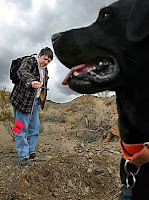 The current dig at the Barker Ranch is promising to become the equivalent of Geraldo Rivera's opening of Al Capone's vault. Here are excerpts from this afternoon’s Los Angeles Times website report, filed by Louis Sahagun at 4:36 p.m. PDT (updates may supplant this initial report):
The current dig at the Barker Ranch is promising to become the equivalent of Geraldo Rivera's opening of Al Capone's vault. Here are excerpts from this afternoon’s Los Angeles Times website report, filed by Louis Sahagun at 4:36 p.m. PDT (updates may supplant this initial report):
A day’s work in 100-degree heat at a remote ranch once used as a hangout for the notorious Charles Manson family yielded only a .38-caliber shell casing today. But a posse of Inyo County sheriff’s investigators was expected to continue the dig in Death Valley National Park.
[...]
Of particular interest today were two sites where cadaver dogs and analyses of soil samples produced mixed but somewhat encouraging results that could possibly support lingering rumors that bodies may be buried at Barker Ranch. The collection of sheds and a rock-and-plaster ranch house are five miles up a rugged black rock canyon at the park’s southwestern boundary.
Inyo County Sheriff Bill Lutze has said a total of five sites may be excavated over the next few days amid temperatures forecast to hover near 110 degrees. Sheriff’s authorities were expected to provide reporters with a progress report later today.
To reiterate: we shall see. Aside from the allegation, without source, by a former Manson "Family" member that there are bodies buried at the Barker Ranch, there may be other motivations for the dig that are, in fact, unrelated to the Mansion "Family."
Death Valley Days: One
 An update on yesterday afternoon's blog about the archaeological/forensic dig going on at the Barker Ranch, the remote set of buildings in the Panamint Mountains at the southwestern edge of Death Valley used by Charles Manson and his “Family” as a refuge in 1968-69: this afternoon the Los Angeles Times provided an update on the excavation, but no new details were added to the report.
An update on yesterday afternoon's blog about the archaeological/forensic dig going on at the Barker Ranch, the remote set of buildings in the Panamint Mountains at the southwestern edge of Death Valley used by Charles Manson and his “Family” as a refuge in 1968-69: this afternoon the Los Angeles Times provided an update on the excavation, but no new details were added to the report.
However, after having re-read yesterday’s blog, it occurred to me that I might have given too much emphasis to the issue of the “snuff” film rather than the issue of whether there might be bodies buried near the Barker Ranch in that remote area of Death Valley. As I pointed out, the use of “snuff” to refer to films (or videotape) purportedly containing scenes of actual murder was originated by Ed Sanders in his 1971 book on Manson, The Family (most recently reissued in 2002). But it occurred to me that there are actually two, unrelated, issues here: whether there were, in fact, any “snuff films” ever made, by Manson and his “Family” or by others, on 8mm or other storage media; and whether there might be any bodies to be found buried in the environs of the Barker Ranch.
Having reflected on the issue, I'm now wondering why law enforcement authorities believe there might be bodies buried near the Barker Ranch in the first place. My interest rekindled by the archaeological/forensic research mission presently going on, this morning I was motivated to re-read Ed Sanders' The Family, the first edition hardcover I bought in the early 1970s (the edition published prior to a lawsuit that required its author to remove any references to "The Process"). He makes no reference to murders or burials that might have taken place at the Barker Ranch, although he does refer to murders in the state that occurred when Manson Family members were placed in the area. One brief sentence, however, in today's report explains the reason for the recent investigation:
A member of the Manson family later suggested that there were bodies buried at Barker Ranch.
Apparently this information surfaced many years after Sanders published his book. I should note that a preliminary dig occurred at the ranch in February of this year, so perhaps the information surfaced only recently.
To reiterate the conclusion I made at the end of yesterday's blog: we shall see.
Silly Love Songs
 I am sure it will come as no surprise to anyone for me to say that the vast majority of popular songs are love songs. And although this fact may surprise no one at all--indeed, may be a painfully banal observation--no one, to my knowledge, discusses it. Indeed, it is one of those "obvious" facts of our daily lives that is rarely, if ever, discussed. I'm sure we've heard it said a thousand times, "it is a fundamental desire for human beings to love and to want to be loved," but the insight is no more startling or profound or meaningful, as a simple declarative sentence, than "the sky is blue." For scholars who approach popular music from a sociologist's perspective, such as Simon Frith, the fact that the bulk of popular songs are love songs "is more than an interesting statistic; it is a centrally important aspect of how pop music is used" ("Towards an Aesthetic of Popular Music," in Music and Society, Cambridge University Press, 1987, p. 141). For Simon Frith, it is one of the social functions of popular music "to give us a way of managing the relationship between our public and private emotional lives." Why are love songs so important to us? Frith asks.
I am sure it will come as no surprise to anyone for me to say that the vast majority of popular songs are love songs. And although this fact may surprise no one at all--indeed, may be a painfully banal observation--no one, to my knowledge, discusses it. Indeed, it is one of those "obvious" facts of our daily lives that is rarely, if ever, discussed. I'm sure we've heard it said a thousand times, "it is a fundamental desire for human beings to love and to want to be loved," but the insight is no more startling or profound or meaningful, as a simple declarative sentence, than "the sky is blue." For scholars who approach popular music from a sociologist's perspective, such as Simon Frith, the fact that the bulk of popular songs are love songs "is more than an interesting statistic; it is a centrally important aspect of how pop music is used" ("Towards an Aesthetic of Popular Music," in Music and Society, Cambridge University Press, 1987, p. 141). For Simon Frith, it is one of the social functions of popular music "to give us a way of managing the relationship between our public and private emotional lives." Why are love songs so important to us? Frith asks.
Because people need them to give shape and voice to emotions that otherwise cannot be expressed without embarrassment or incoherence. Love songs are a way of giving emotional intensity to the sorts of intimate things we say to each other (and to ourselves) in words that are, in themselves, quite flat. It is a peculiarity of everyday language that our most fraught and revealing declarations of feeling have to use phrases--'I love/hate you', 'Help me!', 'I'm angry/scared'--which are boring and banal; and so our culture has a supply of a million pop songs, which say these things for us in numerous interesting and involving ways. (141)
There's another way to explain why our culture has a million songs about love, though, and it has been expressed by a prominent musician and songwriter, jazz sage Mose Allison. During an interview with Joel Dorn (cited in the liner notes to Allison Wonderland: The Mose Allison Anthology, Atlantic, 1994) Allison said this, which I hope we'll ponder the next time we hear one of those "silly" love songs on the radio:
A prominent white educator was studying the culture of the Hopi, a desert-dwelling Native American tribe of the Southwest. He found it strange that almost all Hopi music was about water and asked one of the musicians why. He explained that so much of their music was about water because that was what they had the least of. And then he told the white man, "Most of your music is about love."
Monday, May 19, 2008
Death Valley Days
 According to a report published this afternoon on the Los Angeles Times website, early tomorrow morning (Tuesday), Inyo County Sheriff’s investigators, accompanied by forensic scientists, will begin lugging portable ground-penetrating radar, magnetometers, shovels, and other excavating tools up to the Barker Ranch at the edge of Death Valley on a mission to confirm or deny speculation that there may be graves at the ranch, used in 1969 as a secluded hideout by Charles Manson and his so-called “Family.” The excavation at the Barker Ranch, located at the southern end of Death Valley National Park—in terrain so formidable that it can only be reached by 4-wheel drive vehicles—is expected to continue through Thursday.
According to a report published this afternoon on the Los Angeles Times website, early tomorrow morning (Tuesday), Inyo County Sheriff’s investigators, accompanied by forensic scientists, will begin lugging portable ground-penetrating radar, magnetometers, shovels, and other excavating tools up to the Barker Ranch at the edge of Death Valley on a mission to confirm or deny speculation that there may be graves at the ranch, used in 1969 as a secluded hideout by Charles Manson and his so-called “Family.” The excavation at the Barker Ranch, located at the southern end of Death Valley National Park—in terrain so formidable that it can only be reached by 4-wheel drive vehicles—is expected to continue through Thursday.
I look forward to the findings of this intriguing archaeological/forensic research mission, as it has been rumored for almost forty years that the Manson Family committed murders that were recorded on film (or video, depending on the specific version of the rumor). I invite readers to read David Kerekes and David Slater’s book, Killing For Culture (Creation Books, 1994) for further information on the putative Barker Ranch murders. Kerekes and Slater aver that the idea of the Manson family making “snuff” films dates back to Ed Sanders’ book on Charles Manson, The Family (first published by E.P. Dutton, 1971). It was Ed Sanders, in this book, who coined the term “snuff” to describe the content of these elusive films purportedly containing scenes of actual murder. Kerekes and Slater write:
These “whispers” [of snuff films] date back to Ed Sanders’ book, The Family. Here, Sanders states that Family members stole an NBC-TV wagon loaded with film equipment sometime during the Summer of 1969. The truck was subsequently dumped and most of the film given away, but Manson took one of the NBC cameras with him to Death Valley in September [1969]. The Family were also in possession of three Super-8 cameras. It is alleged that they shot porn-movies and, determines Sanders, “the Barker Ranch chop-stab dance, where they [the Family] danced in a circle, then pretended to go into frenzies—attacking trees, rocks and one another with knives.” He adds, “God knows what else they shot with their stolen NBC camera”.... Speaking with an anonymous one-time member of the Family, Sanders learns of a “short movie depicting a female victim dead on a beach” (Killing For Culture, p. 223).
According to the Los Angeles Times report, locals in the area predict the investigators will turn up nothing but ancient Indian graves. Others, however, say the situation is more problematic in that some California state park rangers claim that if indeed human remains are discovered at the Barker Ranch, they may be connected to an unrelated Death Valley mystery from 1996, the mysterious disappearance of four German tourists.
We shall see.
Something's Up My Sleeve
Yesterday’s blog on the art of rock art prompted me to think about the art of the album cover—the vinyl LP album cover specifically. I say “cover,” but is that the proper nomenclature? Why not “jacket,” or “sleeve”? With the advent of the compact disc jewel case, the material aspect of a vinyl LP’s “jacket,” “cover,” “sleeve,” or “wrapper” is no longer applicable, although a recent development in the music industry has been to reissue albums on compact disc in CD-sized sleeves that duplicate the “original art work" of the LP. The restoration of the original album art reflects a desire, I suppose, for presence, an attempt, writes John Corbett, “to stitch the cut that separates seeing from hearing in the contemporary listening scenario” (Extended Play: Sounding Off from John Cage to Dr. Funkenstein, Duke University Press, 1994, p. 39). For Corbett, the album cover is an "attempt to reconstitute the image of the disembodied voice" (p. 39) to recorded sound.
Having thought about the issue the past twenty-four hours, and having spent some time browsing through my LP collection, I here present my Top 11 favorite album covers—and why eleven? Because I can do as I please; I don't have to limit myself to ten. Why are they my favorites? Because they enchant me without my knowing exactly why: as Roland Barthes observed, "such ignorance is the very nature of fascination" (Roland Barthes by Roland Barthes, Hill and Wang, 1977, p. 3). Do my selections belie my age? Probably, but I would hope that others find my choices as inherently fascinating as I do.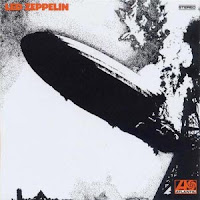
1. Led Zeppelin—Led Zeppelin (Atlantic, 1969); designer, George Hardie.
2. Steppenwolf—Steppenwolf (Dunhill, 1968); designer: Gary Burden; photographer: Tom Gundelfinger.
3. Elvis Presley—Elvis Presley (RCA, 1956); designer: Colonel Tom Parker; photographer: Popsie [William S. Randolph].
4. London Calling—The Clash (Epic, 1979); designer: Ray Lowry; photographer: Pennie Smith.
5. News of the World—Queen (Elektra, 1977); designer: Roger; painting: Frank Kelly Freas (1953).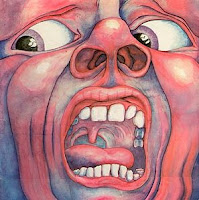
6. In the Court of the Crimson King—King Crimson (Atlantic, 1969); painting: Barry Godber.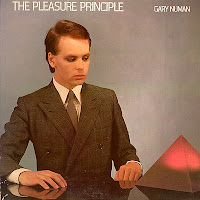
7. The Pleasure Principle—Gary Numan (Atco, 1979); designer: Malti Kidia; photographer: Geoff Howes.
8. Electric Warrior—T. Rex (Warner Brothers, 1971); designer: Hipgnosis.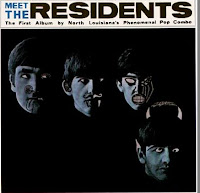
9. Meet the Residents—The Residents (Ralph, 1974); designer: Porno/Graphics; photographer: Robert Freeman.
10. Dark Continent—Wall of Voodoo (I.R.S., 1981); designer: Philip Culp; photographer: Scott Lindgren.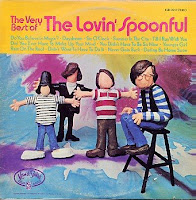
11. The Very Best of the Lovin’ Spooful—The Lovin’ Spoonful (Kama Sutra, 1970); sculpture: Ollie Alpert.
Sunday, May 18, 2008
Art of Rock
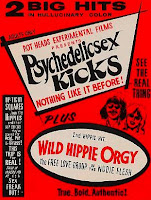 At Bonhams New York this past Wednesday, May 14, The Peter Golding Collection of Rock & Roll Art fetched close to $795,000, according to a spokesman for the auction house. While many of the pieces were original works of art, some of the items included preliminary drawings and sketches for album covers and concert posters. The Peter Golding collection represents about forty years of collecting such work; Golding is the British designer of the first stretch jeans. Go here for a closer look at the 164 lots offered at the auction. The auction's top seller was an 48"x36" acrylic on canvas by the late Rick Griffin--considered by some to be psychedelia's grand master--for the Grateful Dead's 1990 "Without a Net" European tour, which sold for $114,000; go here to see the piece.
At Bonhams New York this past Wednesday, May 14, The Peter Golding Collection of Rock & Roll Art fetched close to $795,000, according to a spokesman for the auction house. While many of the pieces were original works of art, some of the items included preliminary drawings and sketches for album covers and concert posters. The Peter Golding collection represents about forty years of collecting such work; Golding is the British designer of the first stretch jeans. Go here for a closer look at the 164 lots offered at the auction. The auction's top seller was an 48"x36" acrylic on canvas by the late Rick Griffin--considered by some to be psychedelia's grand master--for the Grateful Dead's 1990 "Without a Net" European tour, which sold for $114,000; go here to see the piece.
One of the more interesting items for sale was an exhibitor's brochure for the movies Psychedelic Sex Kicks and Wild Hippie Orgy, presented by "Pot Heads Experimental Films." The brochure's cover promises "2 Big Hits" in "Hullucinary Color" [sic]. If you always wanted to own the item, you still have a chance--although the brochure was estimated to go between $150-250, it didn't sell. The films boast scenes in which "Up-tight squares join the hippies and their hip chicks...this trip is for real!"
By Hook or by Crook
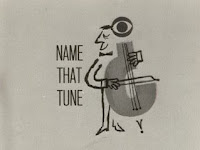 What’s the difference between a hook and a ditty? Available definitions don’t offer much help, I’ve discovered. The following definitions are available from answers.com:
What’s the difference between a hook and a ditty? Available definitions don’t offer much help, I’ve discovered. The following definitions are available from answers.com:
Hook (n.):
1. a. A curved or sharply bent device, usually of metal, used to catch, drag, suspend, or fasten something else.
b. A fishhook.
2. Something shaped like a hook, especially:
a. A curved or barbed plant or animal part.
b. A short angled or curved line on a letter.
c. A sickle.
3. a. A sharp bend or curve, as in a river.
b. A point or spit of land with a sharply curved end.
4. A means of catching or ensnaring; a trap.
5. Slang. a. A means of attracting interest or attention; an enticement: a sales hook.
b. Music. A catchy motif or refrain: “sugary hard rock melodies [and] ear candy hooks” (Boston Globe).
Ditty (n., pl. –ties):
A simple song.
[Middle English dite, a literary composition, from Old French dite, from Latin dictātum, thing dictated, from neuter past participle of dictāre, to dictate.]
So apparently the word “ditty” refers to a complete song, while “hook” refers to a rhythmic figure or melodic line, that is, a specific element of a song. So is a ditty (song) necessarily composed of more than one hook, or just one? To me, anyway, the origin of the word “ditty” from the Latin dictātum (“thing dictated”) suggests that a ditty is easy to remember (“simple”). Information theory would then tell us that a ditty has a low probability of being transmitted incorrectly (“distorted”), another way of saying it is easily remembered: how many times did you have to hear “Happy Birthday” before you remembered the whole song? Once? The popular TV game show Name That Tune is premised precisely on this insight, that one needs only a few notes in order to have total recall of a song. (I best remember the version of the show in the Seventies hosted by Tom Kennedy, but historically there have been several incarnations of Name That Tune, beginning in the 1950s.)
Are the best pop songs, then, no more than ditties? According to Gary Burns, in “A typology of ‘hooks’ in popular records” [Popular Music 6:1 (Jan., 1987) p. 1], the word hook
connotes being caught or trapped, as when a fish is hooked, and also addiction, as when one is hooked on a drug. These connotations, together with the idea of repetition, are captured in the Songwriter’s Market definition of hook: ‘A memorable “catch” phrase or melody line which is repeated in a song’ (Kuroff 1982, p. 397. Bennett (1983) defines hook as an ‘attention grabber’ (pp. 30, 41).
Music critic Lester Bangs was never comfortable with the multiple connotations of hook as “catchy,” meaning hook as that which catches or ensnares the prey, is addictive, and is seductive and appealing as candy. He wrote:
Listen, I hate hooks. The first time I saw the word “hook” was in a review of a Shocking Blue album in Rolling Stone in 1969. The author had evidently discovered that songwriters sometimes used it and now informed us that the bass riff was the almighty “hook” in their hit “Venus,” that one irresistible little melodic or rhythmic twist that’ll keep you just coming back and back and back and buy and buy and buy. (“Every Song a Hooker,” in Mainlines, Blood Feasts, and Bad Taste: A Lester Bangs Reader, Anchor Books, 2003, pp. 351-52)
Freud argued that repetition is pleasurable because we associate it with the pleasure of the mother’s breast (or bottle) from which we nursed (sucked, in the sense of reiterated action) as infants. Whether one believes this argument is irrelevant, because in fact the most successful pop songs (measured in terms of economic success) prove the point anyway, with their relentless repetition--reiteration--of melodic lines and rhythmic figures, a practice justified in order to make a song "suitable for dancing".
Lester Bangs cited “Leader of the Pack” by the Shangri-Las as a positive example of a song with hooks, while Kim Carnes’ “Bette Davis Eyes” is a negative example (an instance of music business "cynicism"). I might cite “My Guy” by Mary Wells as a positive example, or The Temptations' "Just My Imagination (Running Away With Me)," the type of song that if I hear it early in the day I hear it the rest of the day (in a good way). But if Bachman-Turner Overdrive’s “Takin’ Care of Business” comes on the radio, the radio goes off--as fast as my synapses can fire.
For further reading:
Lick
Riff
Theme
Melody
Ostinato
Saturday, May 17, 2008
The Mad Man
 Will Elder (1921-2008), among the first cartoonists whose work appeared in that long-running magazine satirizing American popular culture, Mad, at its inception in 1952, has died at age 86 of Parkinson’s disease. Among Elder's other creations for the venerable magazine was the figure of the career criminal named "Mole" who was always tunneling into disaster. And in issue #27 (April 1956) the magazine offered for mail-in purchase a 5x7 black & white portrait of the “What, Me Worry?” kid, first drawn by Elder. He thus was the first artist to draw that magazine's iconic kid with the huge grin, although a couple of issues later (#30), artist Norman Mingo drew a color rendition, and "Alfred E. Neuman" was born. The original black & white portrait by Elder is now a valuable collector’s item, as it was offered for sale only in a couple of issues before Mingo's version replaced it.
Will Elder (1921-2008), among the first cartoonists whose work appeared in that long-running magazine satirizing American popular culture, Mad, at its inception in 1952, has died at age 86 of Parkinson’s disease. Among Elder's other creations for the venerable magazine was the figure of the career criminal named "Mole" who was always tunneling into disaster. And in issue #27 (April 1956) the magazine offered for mail-in purchase a 5x7 black & white portrait of the “What, Me Worry?” kid, first drawn by Elder. He thus was the first artist to draw that magazine's iconic kid with the huge grin, although a couple of issues later (#30), artist Norman Mingo drew a color rendition, and "Alfred E. Neuman" was born. The original black & white portrait by Elder is now a valuable collector’s item, as it was offered for sale only in a couple of issues before Mingo's version replaced it.
An obituary can be found here, and an interesting interview over here. Daniel Clowes’ book, Will Elder: The Mad Playboy of Art, is widely available on the web, as is Elder's Chicken Fat, a collection of drawings, sketches, and cartoons. Among Elder's other famous creations is "Little Annie Fanny," the comic strip featuring a buxom blond that appeared in Playboy magazine; collections of these 'toons are also available in book form.
I suspect that rather than mourn his passing, Elder would prefer us to inject some humor into our day today--inject some humor "in a jugular vein."
Friday, May 16, 2008
Lumpy Pandemonium Ballet
 At the beginning of this year I embarked on a peculiar, perhaps grossly self-indulgent experiment of trying to listen to all the rock and R&B albums released in the year of 1968--forty years ago--in the order, as best as I could determine, in which they were released. Why 1968? Because it was the year I seriously began to collect albums. I cannot claim that the following list of albums is exhaustive; rather, it consists of those albums I either had or I could easily get my hands on (eBay therefore came in handy on occasion). As might be expected, the experiment prompted me to fill in some gaps in my collection. I sat down over my Christmas break and compiled as comprehensive a list as I could make, then determined which albums I already owned (on vinyl LP or compact disc) and which I would need to acquire. As it turns out, I had a good number of them, although I purchased a few on CD because I wanted the liner notes and bonus tracks.
At the beginning of this year I embarked on a peculiar, perhaps grossly self-indulgent experiment of trying to listen to all the rock and R&B albums released in the year of 1968--forty years ago--in the order, as best as I could determine, in which they were released. Why 1968? Because it was the year I seriously began to collect albums. I cannot claim that the following list of albums is exhaustive; rather, it consists of those albums I either had or I could easily get my hands on (eBay therefore came in handy on occasion). As might be expected, the experiment prompted me to fill in some gaps in my collection. I sat down over my Christmas break and compiled as comprehensive a list as I could make, then determined which albums I already owned (on vinyl LP or compact disc) and which I would need to acquire. As it turns out, I had a good number of them, although I purchased a few on CD because I wanted the liner notes and bonus tracks.
I must emphasize that this list is rather idiosyncratic, neither a "classic rock" list nor an attempt to listen to every pop album released that year. What follows is the order in which I have listened to the albums (with one exception, as indicated). This week, for instance, I have been listening to Frank Zappa's album Lumpy Gravy, which so far as I was able to determine, was released on LP on May 13, 1968--forty years ago this week. Next week I'll listen to Spooky Tooth's It's All About. Predictably, during the course of compiling this list I found that my memory was faulty: I mistakenly had albums released later in the year in the record bins earlier in the year (and vice versa). Happily, I must also admit to having discovered a few albums I'd overlooked all those years ago that have now become my favorites--Harry Nilsson's Aerial Ballet, for instance. In fact, I liked it so much I was motivated to acquire his previous album, Pandemonium Shadow Show (1967), which I learned was one of John Lennon's favorites and which has become, four decades late(r), one of mine. While I'd always very much liked Nilsson, I was most familiar with his later albums; I am delighted to have finally given these albums the careful listen they so richly deserve.
If any readers have the inclination to correct the information below, or suggest I acquire titles that I've so far overlooked, please don't hesitate to contact me. I'll periodically update the list and correct it, and of course add to it in future blogs. At the end of the month, if I remember, I'll post my June listening schedule. Consider it the aural equivalent of what book stores call a summer reading program. If there is a certain "classic" album missing from the following list, then you can be reasonably certain that it wasn't yet released by the end of May 1968 (e. g., Pink Floyd's A Saucerful of Secrets, released in June, or The Byrds' Sweetheart of the Rodeo, released in July).
Please note that some live albums, released two or three years after their original recording (or in some cases, decades later), have been reinserted into the proper sequence to reflect the time they were recorded. These titles are indicated in brackets [ ] after the group's name. Dates reflect US release unless indicated otherwise. Finally, some release dates were determined by the album's catalog number, admittedly not the best way to determine the release date, but a reasonably good indicator nonetheless.
January
Elvis Presley, Elvis’ Gold Records, Volume 4 - 1/2
The Byrds, The Notorious Byrd Brothers- 1/3
The Kinks, Live at Kelvin Hall - 1/12
The Bee Gees, Horizontal
Autosalvage, Autosalvage
Blue Cheer, Vincebus Eruptum
Steppenwolf, Steppenwolf
The Electric Prunes, Mass in F Minor
Canned Heat, Boogie with Canned Heat - 1/21
Aretha Franklin, Lady Soul - 1/22
Spirit, Spirit - 1/22
Van Dyke Parks, Song Cycle - 1/29
February
Mason Williams, The Mason Williams Phonograph Record
Blood, Sweat & Tears, Child is Father to the Man
Dr. John the Night Tripper, Gris-gris
Iron Butterfly, Heavy
Tomorrow, Tomorrow
Graham Gouldman, The Graham Gouldman Thing
The Rascals, Once Upon a Dream - 2/19
Otis Redding, The Dock of the Bay - 2/23
Fleetwood Mac, Fleetwood Mac - 2/24
March
Laura Nyro, Eli and the Thirteenth Confession - 3/3
The United States of America, The United States of America - 3/6
The Mothers of Invention, We're Only In It For the Money
Vanilla Fudge, The Beat Goes On
Cream, [Live Cream] [4/70]
The Move, Move [listened to out-of-sequence, just recently]
The Electric Flag, A Long Time Comin’
Joni Mitchell, Song For a Seagull
Incredible String Band, The Hangman’s Beautiful Daughter
The Association, Birthday
The Yardbirds, [Live Yardbirds: Featuring Jimmy Page] - 3/30 [5/71]
April
Simon & Garfunkel, Bookends - 4/3
Moby Grape, Wow/Grape Jam - 4/3
The Zombies, Odessey & Oracle - 4/9 [UK date]
Janis Joplin w/ Big Brother and the Holding Company, [Live at the Winterland ’68, 4/12-13] [1998]
Jimi Hendrix Experience, Smash Hits [UK date]
The Rose Garden, The Rose Garden
Scott Walker, Scott 2
The Monkees, The Birds, The Bees & The Monkees - 4/22
Stephen Stills, [Just Roll Tape, 4/26] [2007]
Sly & The Family Stone, Dance to the Music - 4/27
Scott Walker, Scott 2 - 4/27
The Mamas & Papas, The Papas & The Mamas - 4/29
May
Jefferson Airplane, [Live at the Fillmore East, 5/3-4] [1998]
The Collectors, The Collectors
Quicksilver Messenger Service, Quicksilver Messenger Service
Frank Zappa, Lumpy Gravy - 5/13
Spooky Tooth, It’s All About
The Small Faces, Ogden’s Nut Gone Flake - 5/24
Max Frost And The Troopers, Shape of Things to Come 5/29
[Faux band from AIP’s Wild in the Streets, released 5/29/68]
Again, corrections and/or emendations are welcome (please provide source of your information if you find my dating faulty). I'll try to post June's listening schedule before the end of the month.
List emended 8 September 2008
Thursday, May 15, 2008
Bozo Dionysus
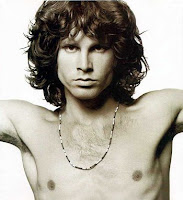 For what perverse reason do “classic rock” radio stations always play the Doors’ “Riders on the Storm” whenever it’s raining? I awoke to find it raining here this morning, and sure enough, as I sat down to check my email after having turned on the radio, like clockwork the DJ played “Riders on the Storm.” The song is instantly recognizable, of course: the opening crash of thunder, the tinkling of the keyboard imitating falling raindrops, and, inevitably, the sinister lyric about the “killer on the road” whose “brain is squirmin’ like a toad.” As poetry it is of a badness not to be believed; there is no group in rock history that so insistently challenges the issue of whether musical quality and canonical status go hand in hand as do the Doors.
For what perverse reason do “classic rock” radio stations always play the Doors’ “Riders on the Storm” whenever it’s raining? I awoke to find it raining here this morning, and sure enough, as I sat down to check my email after having turned on the radio, like clockwork the DJ played “Riders on the Storm.” The song is instantly recognizable, of course: the opening crash of thunder, the tinkling of the keyboard imitating falling raindrops, and, inevitably, the sinister lyric about the “killer on the road” whose “brain is squirmin’ like a toad.” As poetry it is of a badness not to be believed; there is no group in rock history that so insistently challenges the issue of whether musical quality and canonical status go hand in hand as do the Doors.
I can think of no other band of the so-called “classic rock” era so inevitable, and so dubious, as the Doors. Neither could the incomparable Lester Bangs, certainly the wittiest and most iconoclastic of American rock critics. His temperament was such that he couldn’t tolerate the solecism of the rock star, and if ever there were the sort of rock star who excelled at impropriety and obnoxiousness, it was Jim Morrison, characterized by Bangs in an essay published in 1981 as “Bozo Dionysus.” Bangs’ essay, “Jim Morrison: Bozo Dionysus a Decade Later,” was written in response to his having read Jerry Hopkins’ and Danny Sugerman’s Morrison biography, No One Here Gets Out Alive. Having read the book, Bangs concluded that Morrison “was apparently a nigh compleat asshole from the instant he popped out of the womb until he died in the bathtub in Paris....,” as illustrated by incidents such as when he was a kid rubbing dog shit in his little brother’s face, or his later, pathetic, “cock-flashing incident” in Miami in 1969, an action, Bangs observed, that was motivated out of “the same desperation that drives millions of far less celebrated alcoholics.”
What makes the Doors so inevitable as rain? Although he was writing early in 1981 in the context of a Doors resurgence (repeated a decade later with the release of Oliver Stone’s film), I think Lester Bangs is correct when he observes:
... can you imagine being a teenager in the 1980s and having absolutely no culture you could call your own? Because that’s what it finally comes down to, that and the further point which might as well be admitted, that you can deny it all you want but almost none of the groups that have been offered to the public the past few years begin to compare with the best from the Sixties. And this is not just Sixties nostalgia—it’s a simple matter of listening to them side by side and noting the relative lack of passion, expansiveness, and commitment in even the best of today’s groups. (Main Lines, Blood Feasts, and Bad Taste: A Lester Bangs Reader, p. 215)
Bangs has a point, and I can provide anecdotal evidence to substantiate it. Several semesters after I started teaching college twenty-seven years ago, I had a student in my class who had the distinction of having been born at the Woodstock festival in 1969—there were two babies born at Woodstock, and he was one of them. (Not that it meant anything to him. His stepfather told me this, not the kid—at the time—to whom I’m referring.) He was a punk rocker with an aggressive, “fuck you” attitude—died hair, safety pins in the ears, the whole apparatus. He dressed like a Hell’s Angel—motorcycle boots, leather pants and jacket, always a black T-shirt with an image or writing on it. The overall effect was comic, however, because of his age—because he was so young, he was a sort of ludicrous pastiche of a Hell’s Angel, especially when he wore a bandanna, and became a sort of Kewpie doll version of a Hell's Angel. He liked to hang out but didn’t have very much money, so he used to get the owner of the record store to play albums for him, and he would pass judgment based on only a couple of listens. He liked the Sex Pistols and the early Clash, and he liked American groups such as The Ramones and Black Flag. Most importantly, he loved Iggy Pop. He didn’t like later Clash albums such as Sandinista! (1980), because while he claimed to be apolitical, he was actually conservative; he didn’t like the Left-leaning, liberal posturing of that album. And he despised Combat Rock (1982), saying the Clash were sell-outs.
He had very little to say about Sixties groups (with the exception of The Stooges, of course), but he did, though, express great love for the music of the Doors. If you stop to think about it, he was growing in his mother’s womb when Jim Morrison drunkenly flashed his flaccid cock on stage in Miami in March 1969; he wasn’t yet two years old when Morrison died. He would have been around eleven years old when Hopkins’ and Sugerman’s Morrison biography was published and became a best-seller. And he would have been twenty-one when Oliver Stone’s The Doors was released, and I’m very sure the depiction of Jim Morrison in that film made a huge impression on him, as it did others of his generation.
Can you imagine being a teenager in the 1980s and having absolutely no culture you could call your own? Lester Bangs asked, rhetorically, and it was absolutely the right question to ask in order to explain why the Doors had a resurgence beginning in the 1980s. To answer the question is to understand why Iggy Pop is so beloved by that same generation of teenagers. “Surely he [Morrison] was one father of New Wave, as transmitted through Iggy and Patti Smith,” Bangs observed, although he goes on to say, “but they have proven to be in greater or lesser degree Bozos themselves” (219).
Why the appellation “Bozo Dionysus”? I think what Bangs is getting at is the disjunction between what Morrison sought to do and what he actually did: “Jim Morrison had not set out, initially, to be a clown,” but that’s what he became when his literary ambitions were frustrated. By the time of infamous flashing event in Miami, he was too drunk on stage to do anything but do something pathetic, which he, sure as rain, did. He had become redundant by the time L. A. Woman was released in 1971 (for some, however, he had nothing left to say after the Doors’ first album) and like many failed poets, found solace in booze. Perhaps he sought to find a literary renewal in Paris, but all he found was more drugs and, inevitably, alcohol.
The irony is that the song for which the Doors perhaps are most famous, “Light My Fire,” was written not by Morrison but by Robby Krieger (unless you count the lyrics, of course), but I think Lester Bangs is right when he claims that the one great song Morrison had in him was “People Are Strange”:
People are strange when you’re a stranger
Faces look ugly when you’re alone
Women seem wicked when you’re unwanted
Streets are uneven when you’re down
The song’s evoking of a subjective disorientation and dislocation was the effect Morrison frequently sought, but seldom achieved; the song happens to be on what seems to me to be the best, as in listenable, Doors album, Strange Days (1967). Later albums, such as The Soft Parade (1969), fail, primarily because the band was by then engaged in self-parody, and no one can do parody any better than the artist does of himself: think of the “When I was back there in seminary school” and “You cannot petition the Lord with prayer!” rant that begins the muddled “The Soft Parade”—self-parody at its best, and therefore an embarrassment for the listener.
I again refer to Lester Bangs, who claimed that, like it or not, Jim Morrison was one of the fathers of contemporary rock. In Lacanian, that is, psychoanalytic terms, his claim can be understood as saying that Morrison's function is that of the objet petit a, the lure around which the drive circulates, the absence around which the rock community explains its history to itself. In other words, if Jim Morrison didn't exist, we would have to invent him.


